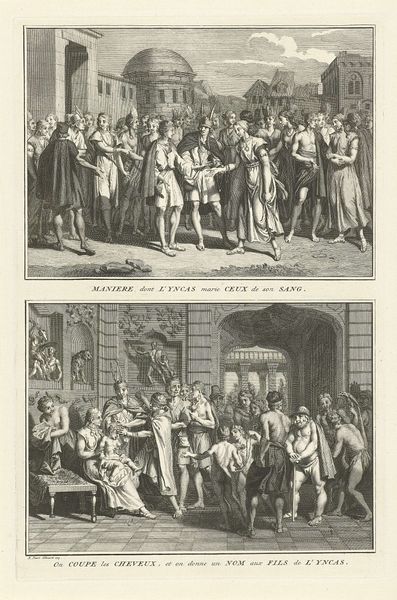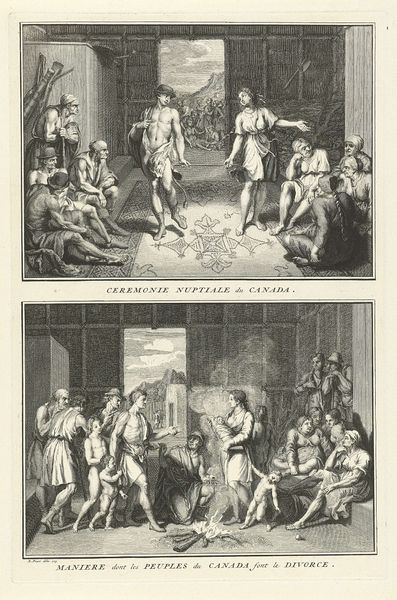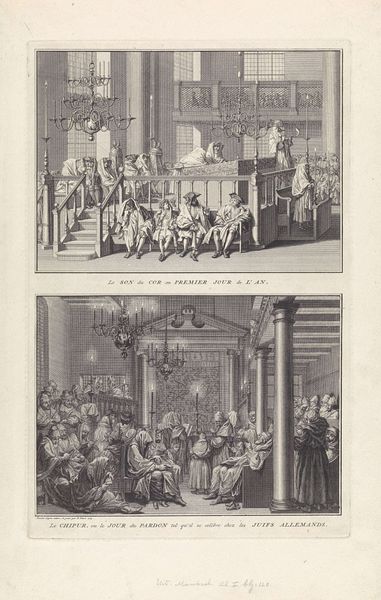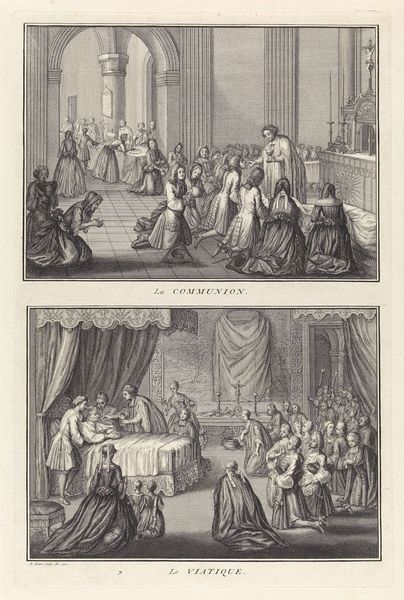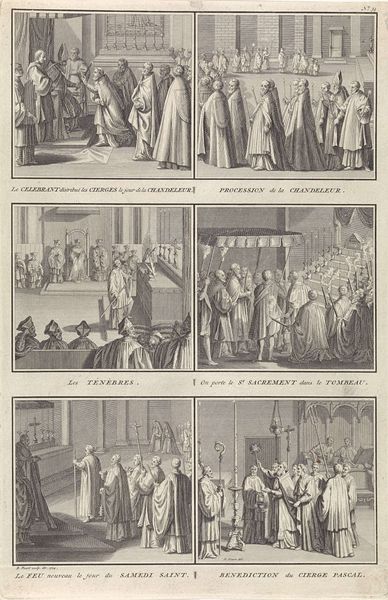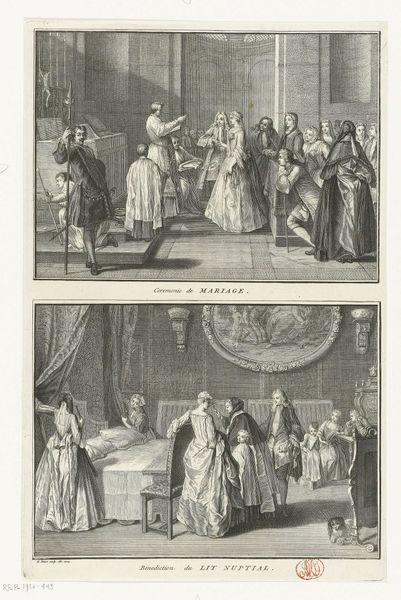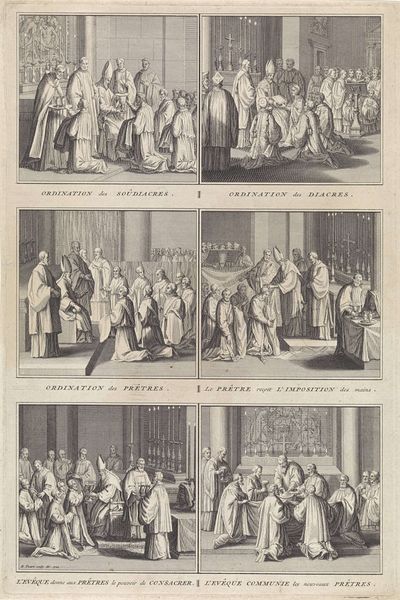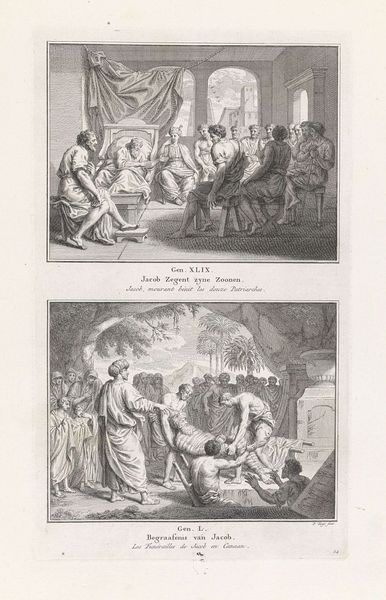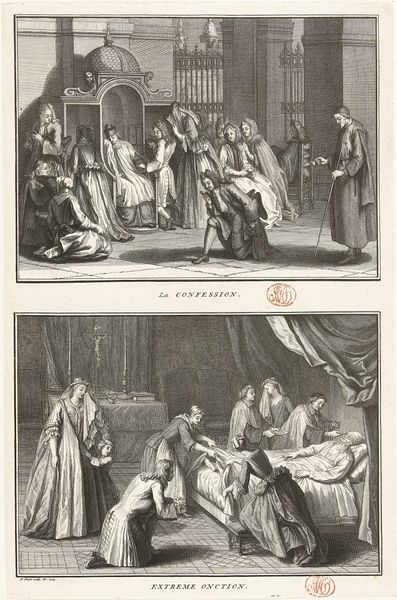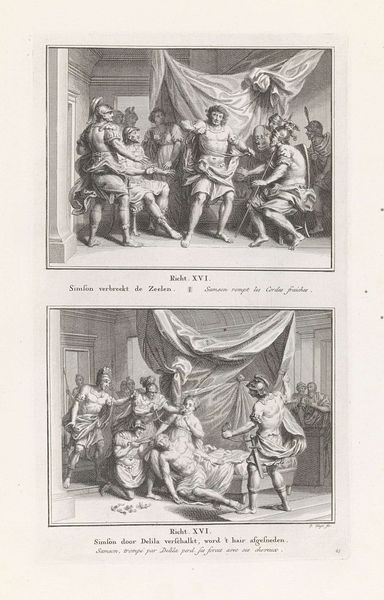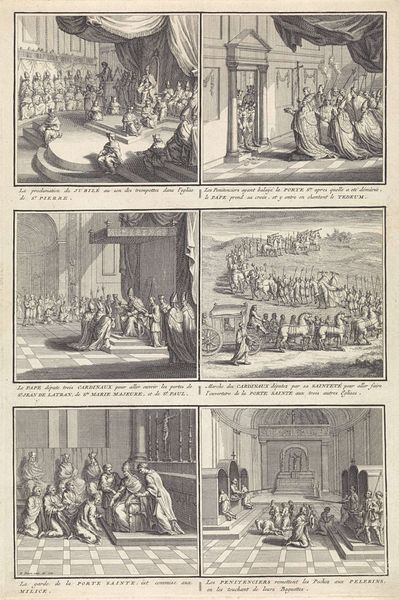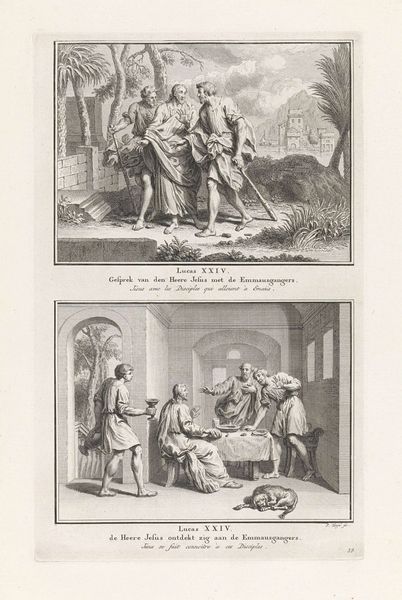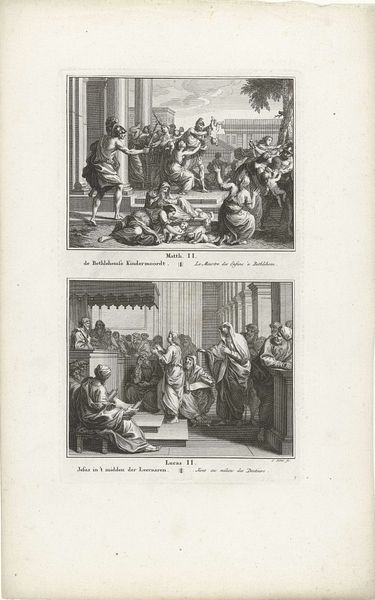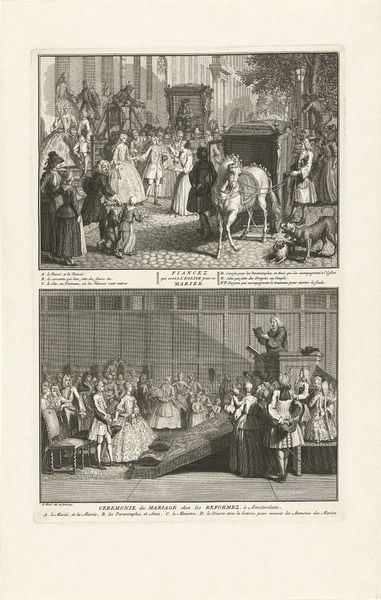
print, paper, engraving
#
narrative-art
# print
#
figuration
#
paper
#
line
#
engraving
Dimensions: height 334 mm, width 220 mm
Copyright: Rijks Museum: Open Domain
Editor: This engraving, “Mexicaanse huwelijksplechtigheid en doopceremonie” by Bernard Picart from 1723, depicts what appear to be marriage and baptism rituals of the Mexican people. I'm struck by the sharp contrast between the clarity of line and the implied cultural complexity. What aspects of the formal composition stand out to you? Curator: The dichotomy evident within the presented image warrants immediate consideration. Note the upper register versus the lower: the former displays a processional, external to any discernible structure save for the architectural backdrop and the elevated platform upon which the central players reside. The latter shows us an enclosed interior. Editor: I see what you mean, that separation creates a sense of duality. Curator: Precisely. Further, consider the interplay of light and shadow. Picart masterfully employs hatching and cross-hatching to define forms and create depth, even in this monochromatic print. Do you observe any deviation in these textural rendering that could correspond to each ceremony displayed? Editor: Now that you point it out, it seems the marriage scene has more open space and light compared to the denser shading in the baptism. Maybe that's meant to separate the tone of both scenarios. Curator: Indeed. That use of shadow and clarity informs how we perceive the weight or essence of each, doesn't it? Notice also Picart’s linear exactitude is very meticulous—especially his emphasis on detailing different patterns—but with some clear flattening of the forms; there's little foreshortening overall to further enhance the depth, as opposed to something like dynamic torsion or Baroque paintings in architecture. Editor: So, rather than being naturalistic, Picart is more focused on carefully laying out these rituals? Curator: To interpret such in representational terms. An intriguing, though likely unintentional, compositional statement considering Picart never actually visited Mexico, this lends a layer to its viewing that we can perhaps consider a limitation to accurate historical depictions. Ultimately, it’s the formal arrangement and graphic qualities that give it power. Editor: That’s fascinating; I’m going to pay more attention to how artists use light and shadow in prints now!
Comments
No comments
Be the first to comment and join the conversation on the ultimate creative platform.
